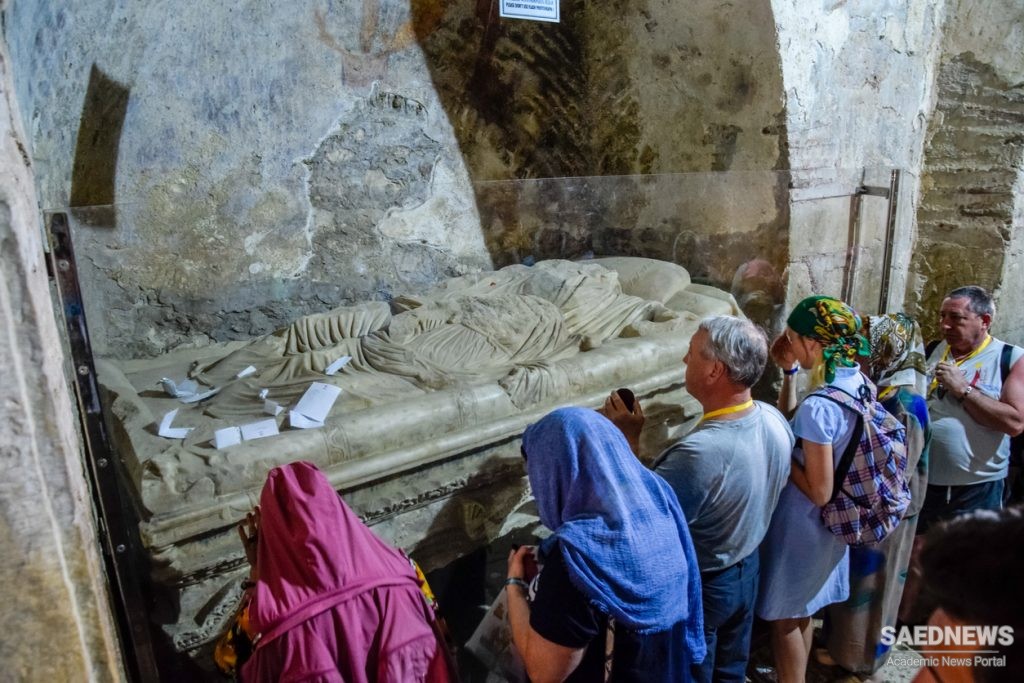Visits related to religion and sacred heritage can be in the form of either mass tourism in the industry mainstream or low-key, related to sustainable tourism and local sustainability. The focus may be a long-standing or permanent attraction, or a one-off or sequential event or events. The public display of the Turin Shroud is an example of a major tourism happening. Interestingly, this has involved careful management of artefact and visitor to allow free access to the religious devotee, while at the same time offering a major paying, touristic event. The proposed Sea of Galilee Theme Park is an extreme example of a mass tourism initiative. Low-key examples include attempts in the UK to promote visitors to regional networks of rural churches such as in Essex (Essex Tourism, undated), in Derbyshire and the Hidden Britain Project, discussed later in the case study section.
Drivers for mainstream religious tourism and pilgrimage are deep within a faith and outside this discussion. However, for religious heritage tourism and low-key rural tourism, the motivation is often financial and/or social. In rural parts of the UK, for example, the rural economy has suffered badly, and initiatives to promote rural church tourism are often attempts to support the community through economic benefits of tourism spend. Additionally, it may help to re-establish the church at the core of rural communities. Religious and heritage tourism based on religious sites or artefacts faces difficulties and raises controversial issues. These include competition between faiths for a location and heritage, and conflicts between pilgrimage and secular, commercial tourism. The building, shrine, or artefact may have great spiritual value, but a commercial value too. As such, and often in an openly accessible situation, it is vulnerable to theft and to vandalism. Furthermore, as with other specialist or low-key tourism assets, financial benefits associated with, say, church visiting do not pay for the resource and its management. The church may be the attraction, but the money is spent in the local cafe, pub or gift shop and, with little reinvestment in presentation or conservation of the site, building or artefact, the situation is not sustainable.
There are aspects of sacred site visiting and management already noted that render some problems particularly important. There can be serious conflicts between a desire to keep facilities freely open to religious visitors, a need to raise money to maintain the fabric and the vulnerability of often-remote sites to vandalism, theft and desecration. According to the English Tourist Board survey (English Tourist Board, 1984), more than half the churches assessed had suffered from theft and almost as many from vandalism, with up to 80% of sites affected. There were problems of wear and tear, damage to buildings, noise, disturbance and litter. A more recent study (ICOMOS-UK, 2000) considered the problems of cathedrals and churches, but with a smaller sample (around 100 sites) than the 1984 survey.
That rural communities and their economies depend more on tourism spend is increasingly recognized and is a key consideration of this case sudy. In the UK, the situation has become particularly acute in recent decades. Declines in farming and forestry over the 1990s were paralleled by increases in leisure day visits and tourism to countryside areas. This came to a pitch with chaos over foot-and-mouth disease and the economic impacts of advice given to the public not to visit the countryside. Incomes plummeted and businesses closed (Countryside Agency and English Tourism Council, 2001). In the aftermath of the crisis and in response to other problems of rural areas (BSE etc.), many organizations considered ways of responding to and supporting these hard-pressed communities.


 Evolving Paradigms of Pilgrimage: Human Communities and Varied Forms of Deities
Evolving Paradigms of Pilgrimage: Human Communities and Varied Forms of Deities














































